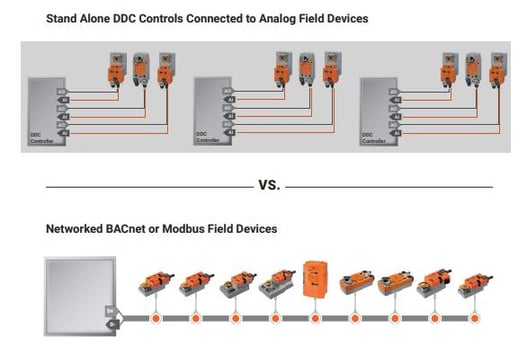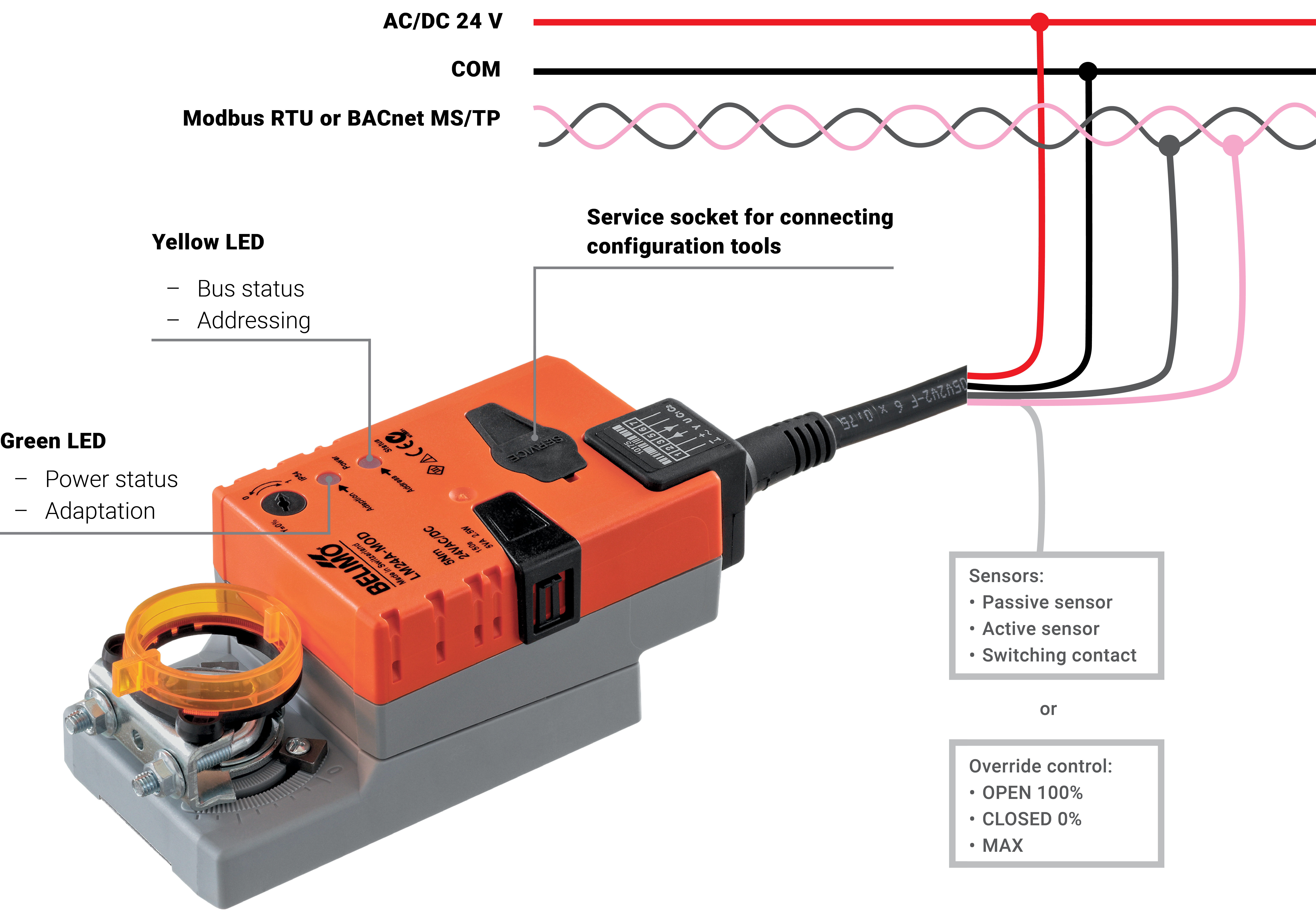Types of HVAC Communication Protocols
Published by
Lisa Hickey
on
System integrators can take full advantage of field devices' flexible control and data with built-in digital communication protocols. The Building Management System incorporates actuators and sensors information directly from the devices, allowing the system integrator to use existing industry software to perform all required device setups, monitoring, and control functions. No additional hardware is required, thus eliminating errors and reducing commissioning time. Expensive home-run wiring associated with traditional DDC systems connected to analog field devices can be minimized.

Bus systems exchange volumes of data. The user has access to control, feedback, and parameters on individual devices. Besides material savings (cables, connecting terminals, connectors, etc.), installation time is more straightforward and reduced. Types of communication protocols include:
MP-Bus is a single-client/multi-server system for HVAC actuators and sensors. A server segment allows up to eight different HVAC performance devices to be grouped and connected to a higher-level system, is resistant to external interferences, and requires only three conductors to employ. The MP-Bus serves to control HVAC actuators for dampers, control valves, and volumetric flow rate controllers from the Airflow Measurement and Control product range.
BACnet MS/TP is a widely used (EIA-485 based) communication protocol for building automation. The standard is open, requires no license, and is used by many international providers, universities, and associations. Implementing the BACnet Standard Device Profiles and the associated BACnet Interoperability Building Blocks guarantees genuine compatibility between various BACnet devices.
BACnet IP is the control industry's standard communication protocol, which lets equipped devices and systems communicate with one another over common IP-based networks.
Modbus is a communication protocol commonly used worldwide and in various applications. Its simple implementation and robust performance make Modbus very popular with many manufacturers.

KNX is a well-engineered building automation system used worldwide to control systems spanning several maintenance groups, such as heaters, blinds, and security technology in buildings. The KNX-certified actuators enable direct connection to the KNX network. Communication takes place via the integrated KNX interface (TP, S-Mode).
IoT actuators with Ethernet interfaces can exchange operating and setting data within the Belimo Cloud. Sequence depending, they can be controlled locally via an analog signal, BACnet IP, or Modbus TCP/IP. Open and seamless integration of Belimo devices is crucial throughout our communications product lines. Customers own the data from their devices and can freely analyze, use, and even delete information—the benefit of an open and secure Client-API.
By integrating digital communication into devices and equipment, HVAC solutions can be remotely monitored, controlled, and maintained. Building Management System (BMS) operators benefit from device data that is easily accessible for monitoring and system control. Facility managers gain valuable insights regarding equipment operation and performance.
